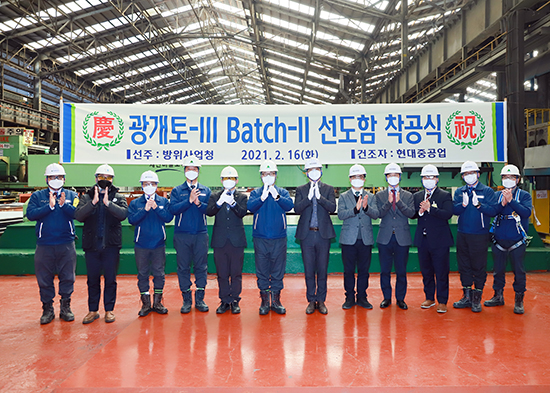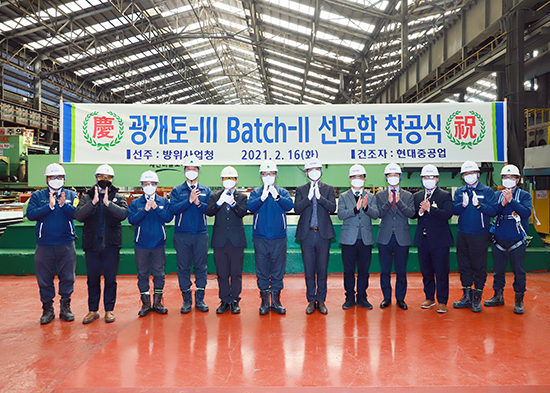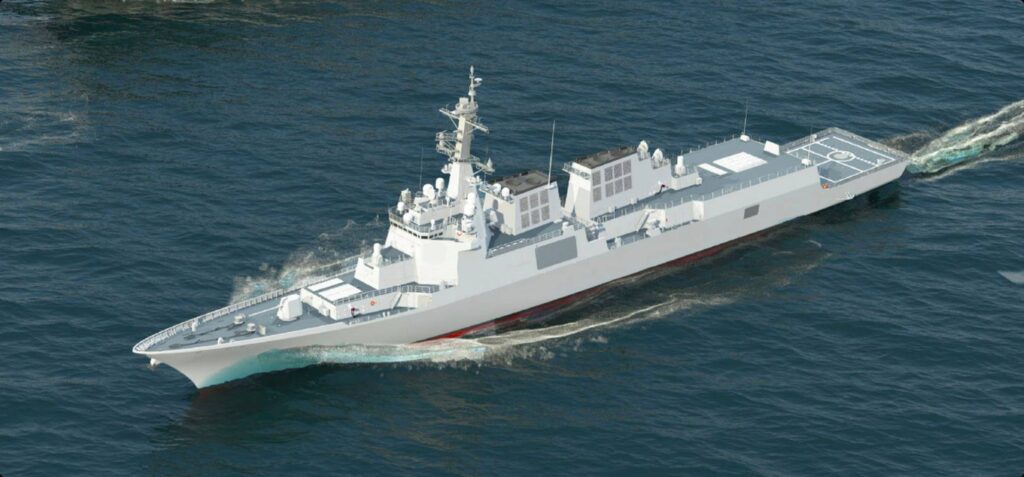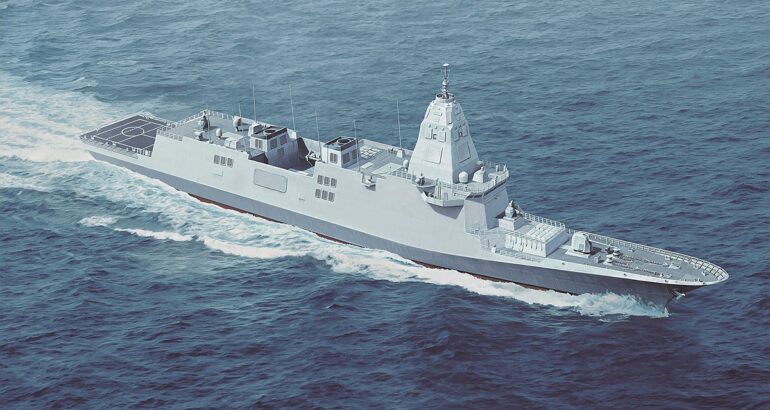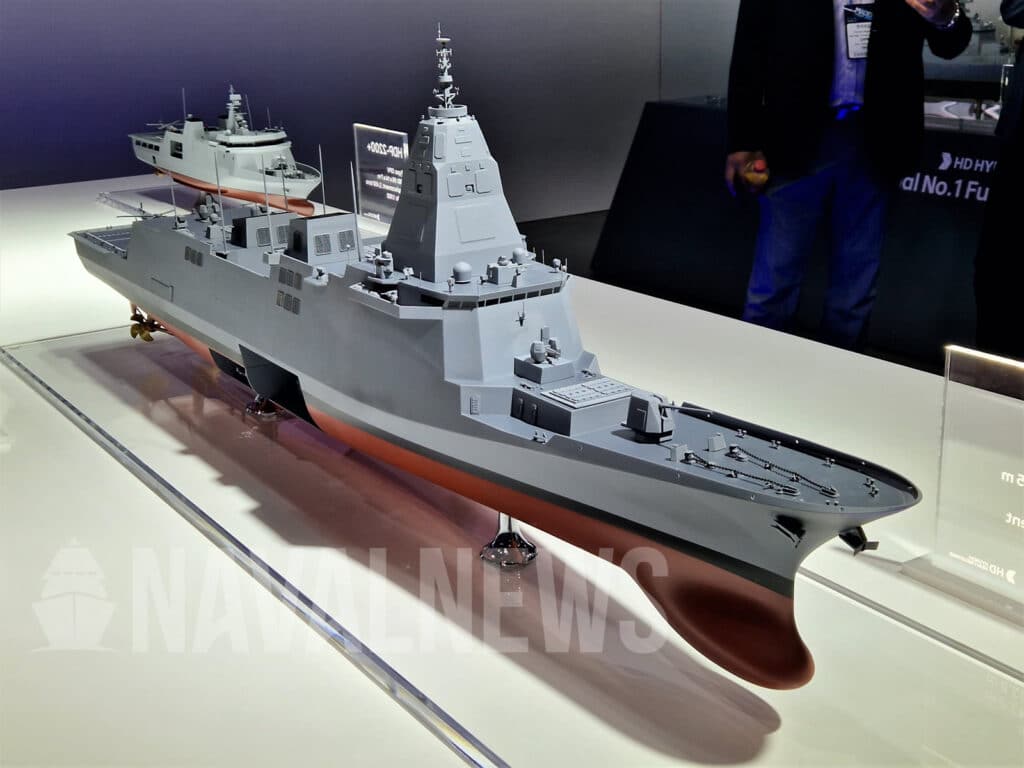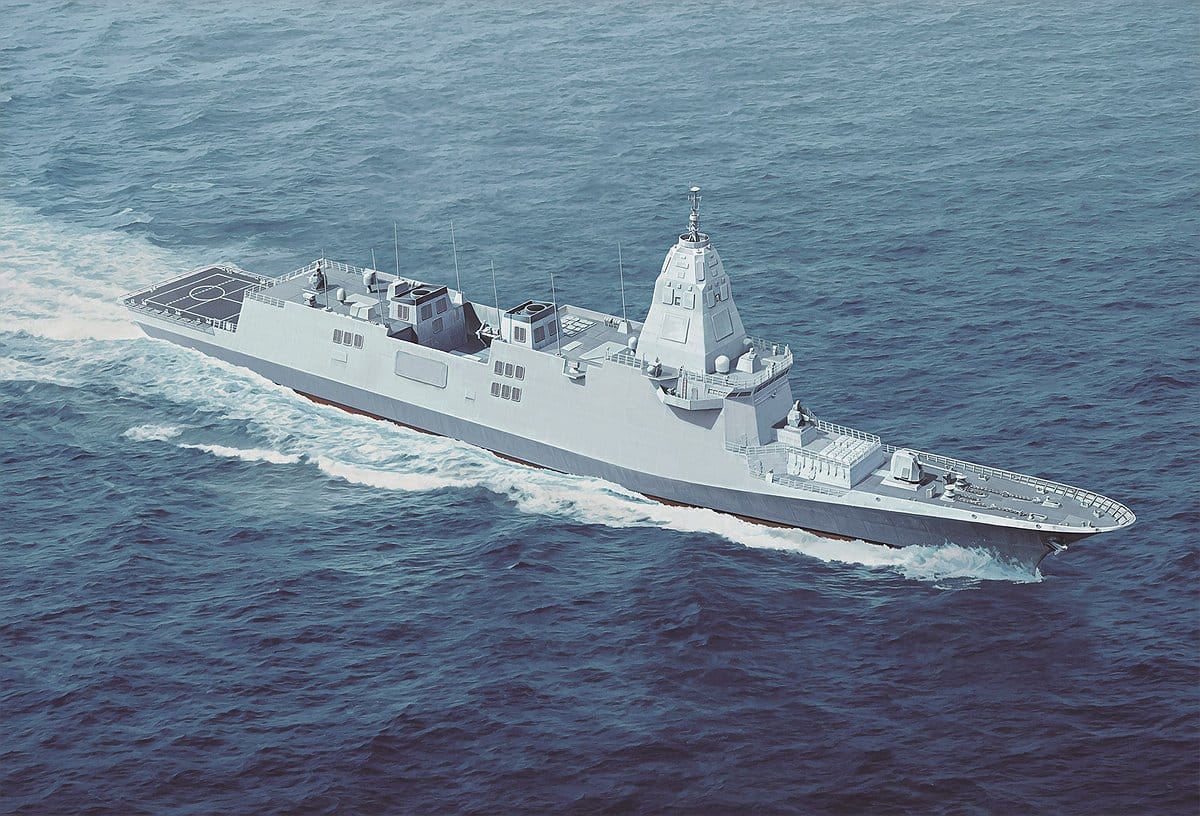Older Naval News article from mid-2022 about Jeongjo the Great-class destroyer:
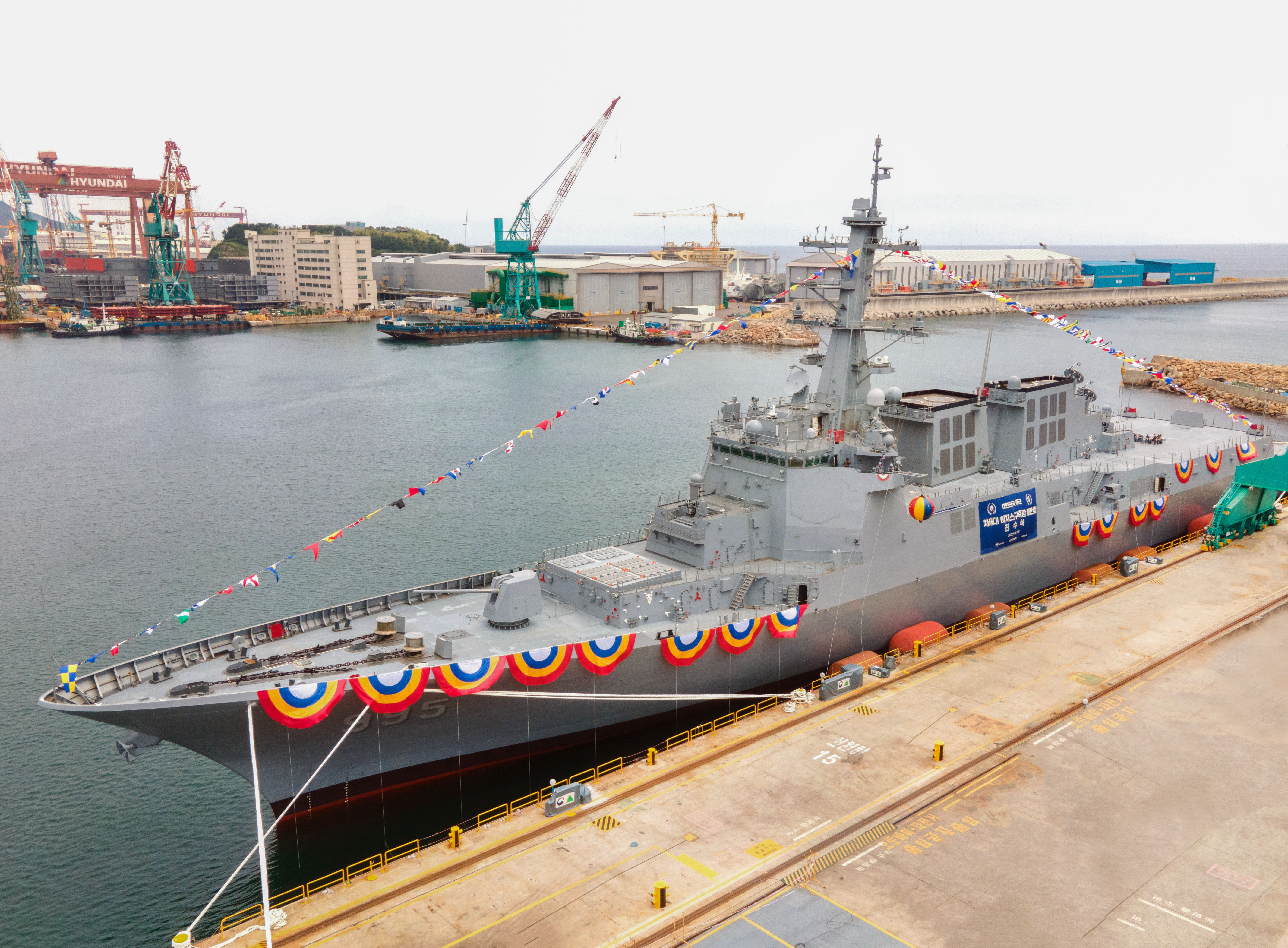
KDX-III Batch-II launching ceremony.
HHI Launches South Korea’s First KDX III Batch II Destroyer
South Korean shipbuilder Hyundai Heavy Industries (HHI) today launched the lead ship of the KDX-III Batch-II AEGIS destroyer project for the Republic of Korea (ROK) Navy: ROKS Jeongjo the Great.
Xavier Vavasseur 28 Jul 2022
According to the ROK Navy and Defense Acquisition Program Administration (DAPA), the launching ceremony of the first ship of the ‘KDX-Ⅲ Batch-II’ project, the ‘Jeongjo the Great’, was held at the Hyundai Heavy Industries shipyard in Ulsan on the morning of the 28th.
“The King Jeongjo, which was independently designed and built in Korea, was launched on the same day after signing a construction contract in 2019 and following a groundbreaking ceremony last year. The vessel is named after a historical figure revered by the people or a national defender who greatly contributed to overcoming the national crisis. The 22nd king of Joseon, Jeongjo (reigned 1776–1800), ascended to the throne at the age of 23 after the death of his grandfather Yeongjo (reigned 1724–1776), the 21st king, and reigned for 24 years. He is evaluated to have led the revival of the late Joseon Dynasty, including the construction of Suwon Hwaseong Fortress. When Jeongjo the Great is commissioned, it will be the 4th Aegis destroyer and the first 8200-ton class destroyer of the ROK Navy following the existing 7600-ton class ‘Sejong the Great’, ‘Yulgok Yii’ and ‘Seoaeryu Seongyong'”.
About ROK Navy’s KDX III Batch II Destroyer
Hyundai Heavy Industries (HHI) announced on October 10 2019 it has signed a US$565 million contract with the South Korean Defense Acquisition Program Administration (DAPA) for the first of three Gwanggaeto-III Batch II (KDX-III Batch II) destroyers for the ROK Navy.
Under the deal, HHI will deliver the first of three Aegis destroyers by November 2024. In May 2019, South Korea approved plans to construct the second batch of three destroyers with a budget of around US$3.3 billion.
The KDX-III Batch II program calls for the construction of three Aegis destroyers, one to be delivered every two years. They will receive pennant numbers 995, 996 and 997. The three existing 7,600-ton KDX-III Batch I Aegis destroyers of the ROK Navy are based on the DDG 51 Arleigh Burke-class of the US Navy. The keel of ROKS Jeongjo The Great, the first of the KDX-III Batch II boats, was laid by HHI on
5 October 2021.
KDX III Batch II weapon systems
Artist impression of the future KDX III Batch II destroyer. HHI image.
Based on the existing Sejong the Great-class the new AEGIS destroyers will feature several improvements including improved combat systems that can detect and track targets at greater distances and anti-ballistic missile capability with
Raytheon’s SM-3 Block IB interceptors.
The KDX-III Batch II will be fitted with SM-2 Block IIIB as well and, possibly, the new SM-6 “multi-mission missile” capable of long-range Fleet Air Defense, Sea-Based Terminal defense, and Anti-Surface Warfare. The decision to procure SM-6 has not been made yet and will depend on budget.
According to our South Korean sources, the KDX III Batch II ships will feature a total of 88 vertical launch system (VLS) cells:
- 48x Mk41 VLS for US-made missiles
- 16x K-VLS
- 24x K-VLS II
K-VLS will be used to deploy K-SAAM (Korean Surface to Air Anti Missile), replacing the RIM-116 Rolling Airframe Missile (RAM). It features inertial mid-course guidance and a dual microwave and infrared homing seeker for terminal guidance. K-VLS will also deploy Hong Sang Eo (Red Shark) rocket-based torpedo (K-ASROC) and Haeryong Tactical Surface Launch Missile (TSLM) land attack cruise missile.
K-VLS II are larger cells currently being developed by Hanwha to launch the future long-range surface-to-air missile (150 Km range) Cheongung 3 (also known as L SAM). Naval News learned from a source at LIG Nex1, that the naval L SAM (which is still in conceptual phase) will only have minor modifications compared to the land-based variant. L SAM is intended to replace SM-2 in the ROK Navy. K-VLS II will also likely be used to launch the new
supersonic anti-ship missile.
Compared to the Batch I, which sports 16 SSM-700K Haeseong (C-Star) anti ship missiles, the Batch II ships will “only” have 8 of them.
While early renderings of KDX III Batch II ships showed them fitted with a RAM missile launcher, the destroyers will actually get the
Phalanx CIWS as their last line of defense, alongside soft kill decoys (Rheinmetall MASS decoy launchers).
KDX III Batch II sensors and CMS
Lockheed Martin is in charge of delivering the AN/SPY-1D(V) multi-function radar as well as the AEGIS combat system for the KDX III Batch II ship. Talking to Naval News during MADEX 2019, Lockheed Martin representatives explained that the destroyers would get the Aegis Baseline 9.C2 derivative with software variant “KII” and BMD baseline 5, which allows the use of SM-3 Block IB. As of October 2019, the radar arrays for the first KDX III Batch II were already in production. The radar arrays and combat system will be tested in New Jersey in 2021 before delivery to South Korea.
Talking to Naval News at MADEX 2019, the KDX III program manager at HHI said the 1st steel cutting is set to take place in 2021 and delivery of the first in class ship is expected for 2024. HHI also provided us with the following details:
KDX III Batch II Characteristics:
- Light displacement: 8,300 tons
- Full load displacement: > 10,000 tons
- Length: 170 meters
- Breadth: 21 meters
- Speed: 30 knots
- Crew: 300 sailors
Source:
https://www.navalnews.com/naval-new...outh-koreas-first-kdx-iii-batch-ii-destroyer/







